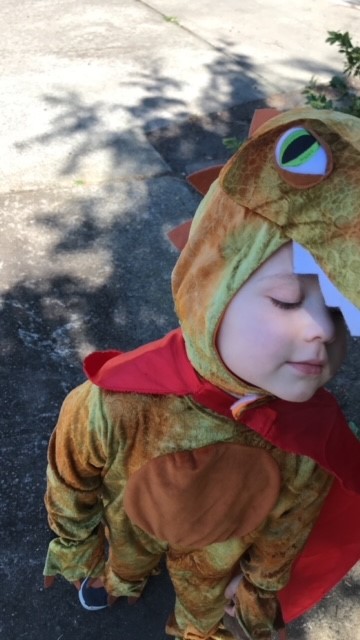“I had always wanted to have a baby born on Halloween,” says Portland, OR resident Stephanie Handlen. When her son Wyatt was born in 2016, it wasn’t on Halloween – her favorite holiday – but the persistent fever he spiked just eight months later was a dark harbinger of a different kind of monster.
Tests and doctors’ visited yielded no answers but still, Wyatt’s crying fits and extreme fatigue told the new mother that something was off. Stephanie was desperate for answers. But the clinic’s blood test gave her something that was less than an answer and more a bolt of fear – go immediately to the hematology/oncology unit of Portland’s Randall Children’s Hospital.
“I just thought well, maybe this is an answer but then I knew something’s wrong immediately because they’re not telling you what it is,” Stephanie said. “They’re not telling you why you’re being referred there.”
At first, the news was good – the pediatric hem/onc doctor told Stephanie that Wyatt wasn’t presenting like a leukemia patient – no achy limbs or other symptoms. But, he said, we’ll do a bone marrow biopsy tomorrow and that’ll give us the real answer.

The next day Stephanie had her answer: acute myeloid leukemia (AML). Chemotherapy began soon afterward and suddenly, little Wyatt, just eight months old and not even crawling or talking yet and having only just figured out the intricacies of sitting up, was in the fight of his life. With his mom Stephanie right there with him.
Not long after his diagnosis, Wyatt’s care team discovered he had rare FTL3 gene mutation that stimulates the uncontrolled growth of immature and abnormal blood cells. That mutation meant his cancer was especially aggressive. Without a stem cell transplant remission, if he could even achieve it, would almost always end in relapse.
Before his first birthday, Wyatt’s only chance to survive was with an unrelated stem cell transplant.
To prepare for a stem cell transplant, high-dose chemotherapy – and sometimes also radiation – is used to knock down cancer cells in the patient’s body, aiming for none detectable on the day of transplant. But due to his FTL3 mutation, Stephanie was given two pieces of bad news: Wyatt would reach 10% leukemia cells in his body and even after his transplant, his chance to survive would be 20%.
Wyatt’s doctors cautioned Stephanie that since so few patients get an FTL3 mutation, those odds weren’t very well-founded, and they were even were reluctant to tell her. “Do you really want to know?” they asked. “Yes, but no,” she replied. “But yes.” She needed to know what she and her baby boy were up against.
After Wyatt’s third round of chemo, he was at 0% cancer cells detectable. Clearly, cancer was messing with the wrong baby.
Wyatt had donor matches from both stem cell and cord blood donors. His cord blood match was stronger though – a 6/6 versus an 8/10 – so Wyatt, a baby, was saved by another baby. His transplant was on Halloween 2016. And because transplant patients often refer to their “transplant-iversary” as their second birthday, Stephanie finally, in a way she never would have asked for got her wish: a baby, born on Halloween.
Wyatt got his “five years clear” of cancer in October 2021, and is today a happy, healthy little guy who found out the hard way how much fight he’s got in him. Fly high, little dude!
More about cord blood donation and transplants: When a new mother donates her baby’s cord blood through the Bloodworks Northwest Cord Blood Program at EvergreenHealth Medical Center, Overlake Medical Center, Swedish Medical Center or Valley Medical Center, their baby can begin life as someone’s hero and their very birth could be someone’s second chance. All at no risk, effort, or expense to parent or baby.
Cord blood contains a high volume of stem cells that can provide a lifesaving stem cell transplant and potential cure for someone with leukemia, lymphoma, sickle cell disease (Sosa’s story), and many other blood-related illnesses. Due to the lack of suitably-matched bone marrow and stem cells in the National Marrow Donor Program’s national database for BIPOC community members, cord blood transplants often offer the best chance at a cure for our community’s minority patients.
Transplant patients of all kinds need blood and platelet transfusions, often dozens of them, both during and after their treatment. The best way to support kids like Wyatt is to donate blood. Make an appointment today and help prove that blood donors are cancer’s worst enemy.


Tell Us What You Think!